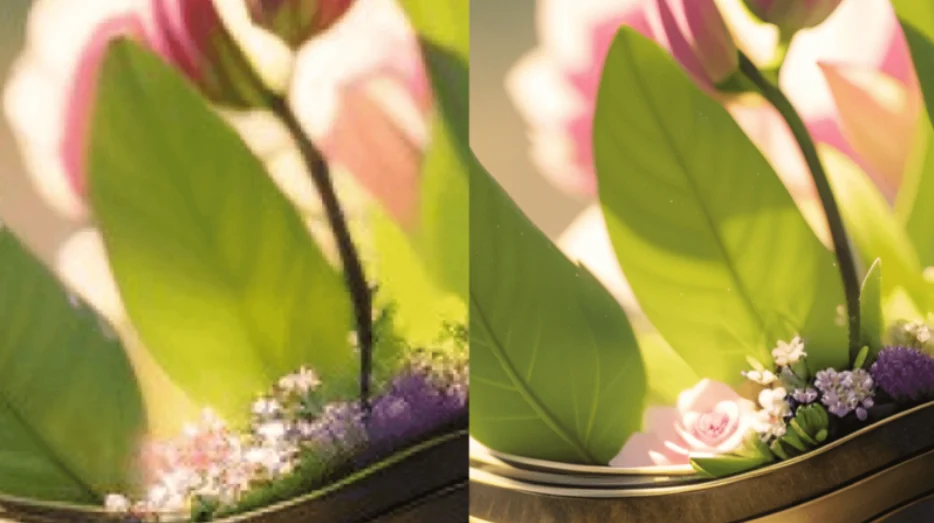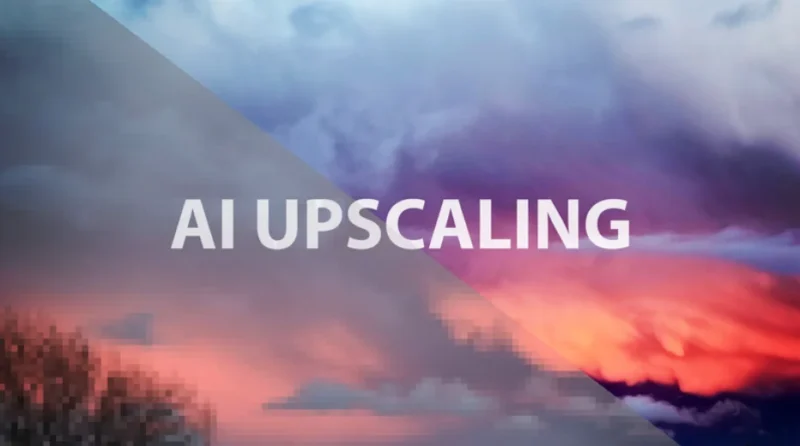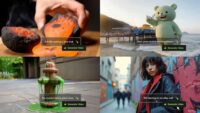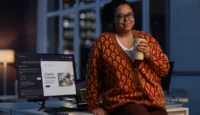In this article:
See more ▼Post may contain affiliate links which give us commissions at no cost to you.Making a small picture larger without it turning blurry or blocky is called ‘image upscaling’. Suppose you make a small sketch on a sheet of paper and then attempt to stretch the paper, your sketch will get larger, but may look odd.
Computers follow a similar process when enlarging digital pictures. Consider you have a tiny patterned blanket and you want a larger blanket with the same pattern. Upscaling is like figuring out how to make that bigger blanket without distorting the pattern.
Traditional Upscaling Methods
There are simple ways computers make images bigger. These are like different recipes for stretching pictures.
Nearest Neighbor Interpolation
Nearest Neighbor is the most straightforward approach. Here, the computer just enlarges each dot (pixel).
It’s something like building with blocks – quite basic but can appear very blocky if you zoom in excessively on a digital image. This method works quickly but produces the most basic results.
Bilinear Interpolation
Bilinear Interpolation is slightly more advanced. In this method, the machine looks at surrounding dots and mixes their colors.
This method resembles color mixing to create intermediate shades between existing ones. The outcome is softer than Nearest Neighbor, but might be somewhat unclear or blurry.

Get 300+ Fonts for FREE
Enter your email to download our 100% free "Font Lover's Bundle". For commercial & personal use. No royalties. No fees. No attribution. 100% free to use anywhere.
Bicubic Interpolation
Bicubic Interpolation is the smartest of the traditional methods. Here, the machine looks at more dots around each point and performs more calculations to find out what should be in between them.
This resembles an artist carefully combining shades to refine an image. It produces superior results compared to the other traditional methods, yet requires more time for processing by the computer.

Popular Upscaling Tools
There are many tools available that can make your pictures bigger and sharper.
All-in-One AI Platforms
Picture increasing tools are quite plentiful out there, including the comprehensive platform, Cabina.AI. It has an AI In Painter feature with an Upscale function that makes your pictures larger and sharper.
Besides upscaling, it offers varied AI models you can use to create and fix images. A unique model includes the Magnific AI upscaler which excels greatly in improving the appearance of tiny photos when enlarged.
With such convenience, you can work on all your pictures in one spot without moving from one program to another.
Free and Specialized Tools
GIMP operates like a free digital art workspace on your computer. It’s capable of enlarging pictures using the traditional methods discussed earlier.
We also have ‘Waifu2x’ which is specifically designed to enhance cartoon-style images when they’re enlarged. This tool works particularly well with anime and illustration-style artwork.
Professional Solutions
Adobe Photoshop is like a premium art studio that professionals prefer. It packs excellent picture enlargement tools with advanced algorithms and fine-tuning options.
There’s also Topaz Gigapixel AI, a specialized software with only one purpose – increasing picture size using intelligent AI technology. This tool focuses exclusively on upscaling and often produces exceptional results.
Tips for Better Results
When you want to make a picture bigger and maintain quality, here are some helpful strategies to follow.
Start with High-Quality Originals
Always pick the highest-quality image available. Picture it like baking – using great ingredients makes your cake delicious.
Similarly, using a high-resolution original image grants you a stunning enlarged result. The better your starting material, the better your final output will be.
Set Realistic Expectations
Don’t expect miracles from any upscaling method. Turning a tiny, unclear photo into a flawless enlarged version is quite challenging, even for advanced AI.
It’s akin to predicting dinosaur appearance from just a tiny fossil. Sure, you could make educated guesses, but most likely there will be minor discrepancies from the original detail.
Experiment with Different Methods
Try various upscaling techniques to see which works best for your specific image. Occasionally, one method of enlarging an image outperforms others depending on the content.
Imagine it as testing different paths to school – some may be faster depending on the circumstances. What works for one image type might not work as well for another.
Scale Gradually
Rather than amplifying an image tenfold in one go, attempt doubling its size gradually, repeating the process as necessary.
Consider it like climbing stairs versus trying to leap straight to the top. Stepping up bit by bit usually works better and produces cleaner results with less distortion.
Apply Final Touches
Post-enlargement, improve the aesthetic appeal of your photo by tweaking colors or enhancing sharpness and contrast.
This resembles adding icing onto a cake to make it look more enticing. Small adjustments can make a significant difference in the final appearance.
Wrapping Up
Making pictures bigger is something computers can accomplish in many different ways. The simple traditional methods like Nearest Neighbor, Bilinear, and Bicubic work adequately for basic needs.
The newer AI-powered approaches can make pictures look much better when enlarged, producing results that seem almost magical compared to older techniques.
Remember that starting with a good picture helps tremendously. No matter how intelligent the computer algorithms become, they cannot perfectly reconstruct details that were never present in the original small picture.
As computers continue to get smarter, making pictures bigger will keep improving. Soon, the difference between a picture that was always large and one that was enlarged from a smaller version might be nearly impossible to detect, even for experts who specialize in image processing.




